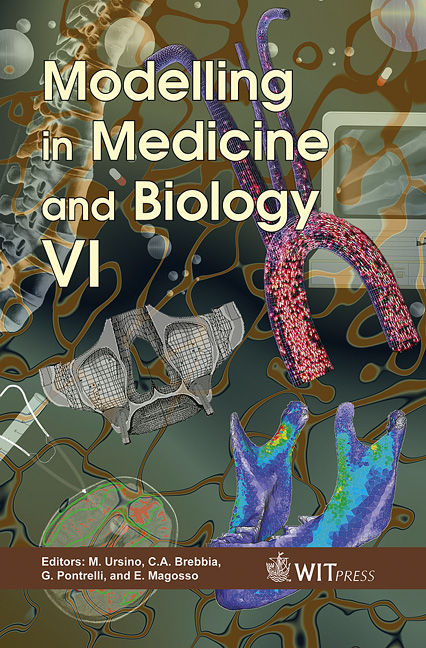Design Of Implantable MEMS Sensors For Early Stenosis Detection
Price
Free (open access)
Transaction
Volume
8
Pages
15
Published
2005
Size
962 kb
Paper DOI
10.2495/BIO050281
Copyright
WIT Press
Author(s)
Y. L. Young, C. A. Steeves, Z. Liu & W. O. Soboyejo
Abstract
This paper examines the design of implantable micro-electro-mechanical systems (MEMS) for long-term in situ monitoring of blood flow. The objective is to develop a smart wireless sensing unit for early stenosis detection. The design includes considerations of non-Newtonian hemodynamics, nonlinear material behavior of the vessel wall and fatty plaque buildup, sensitivity and reliability of the sensors, as well as the use of surface coatings for biocompatibility and non-adhesion of blood constituents. Overviews of the fluid model, material model, sensor design configuration, and surface coating selection are presented. Finally, implications of the results are discussed. Keywords: biomechanics, hemodynamics,MEMS sensors, in situ monitoring. 1 Introduction Stenosis is the narrowing, stiffening, thickening, fusion, or blockage of blood vessels. It is usually caused by plaque buildup, and it can be an extremely serious problem, particularly when it occurs in the blood vessels around the heart. Common corrective procedures include bypass surgery, balloon angioplasty, and stenting. Unfortunately, restenosis often occurs after corrective surgery [1, 2]. Thus, methods to continuously monitor potential stenosis growth and to assess the degree of stenosis are needed. Currently, the \“golden standard” for stenosis diagnosis is x-ray angiography(CA) [3, 4], which is an invasive and potentially hazardous procedure. Non-invasive imaging techniques, such as computer tomography angiography( CT), magnetic resonance angiography(MRA), and duplex ultrasound, are also
Keywords
biomechanics, hemodynamics,MEMS sensors, in situ monitoring.





